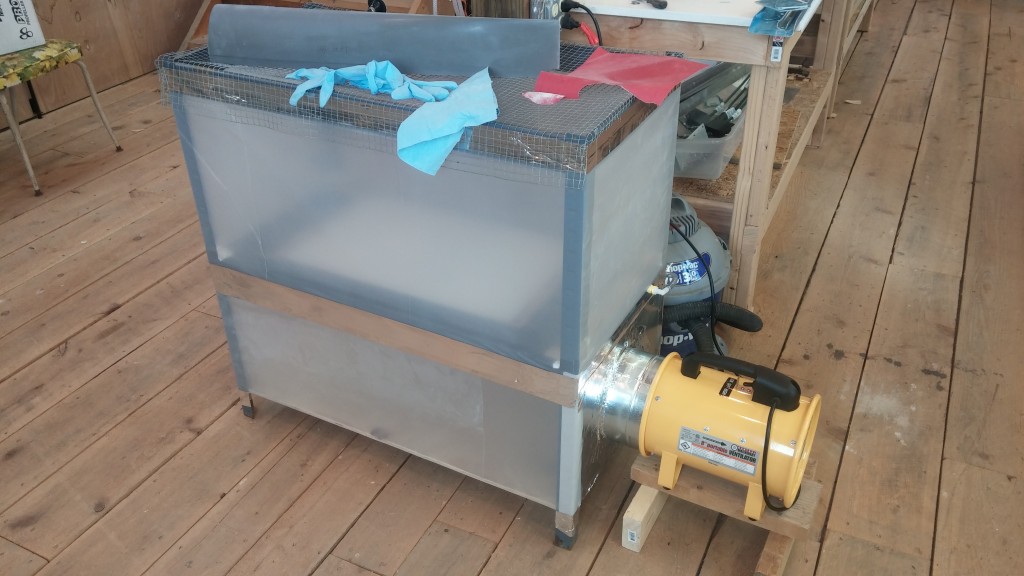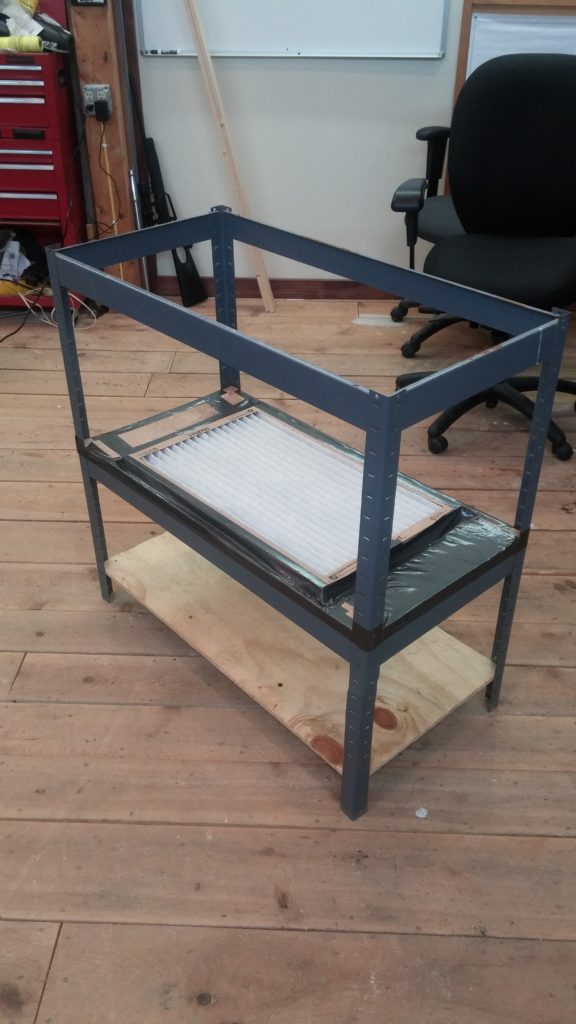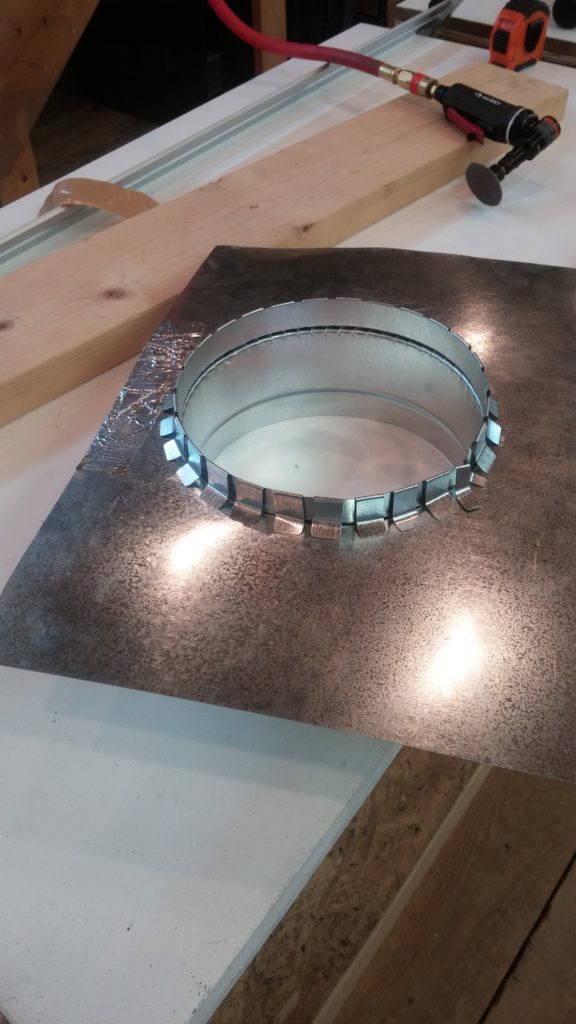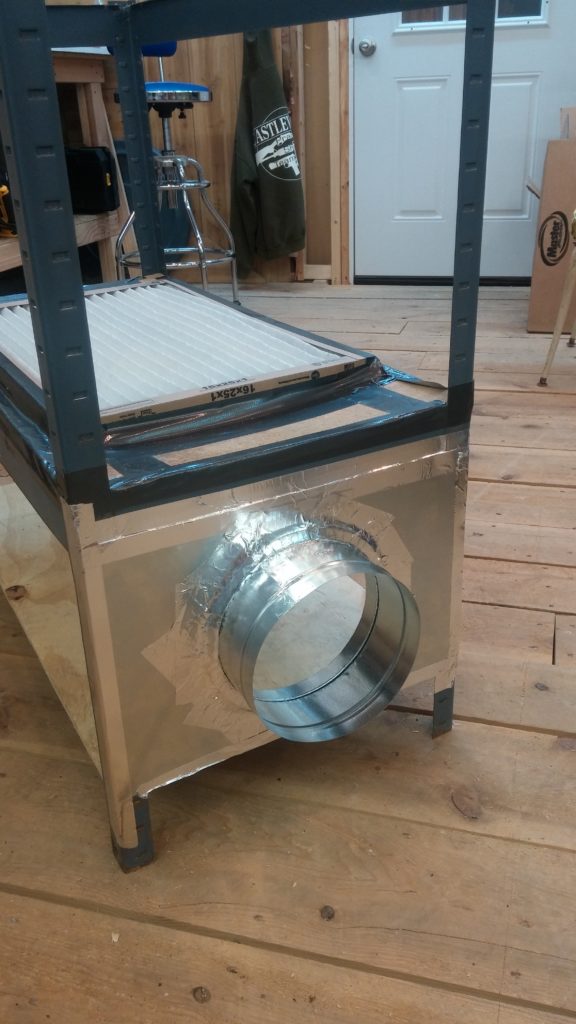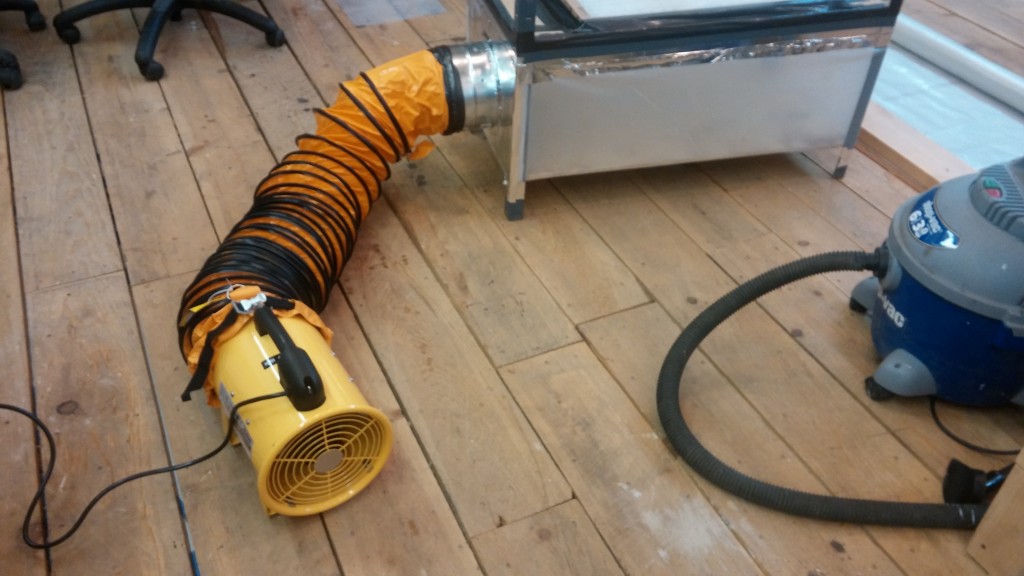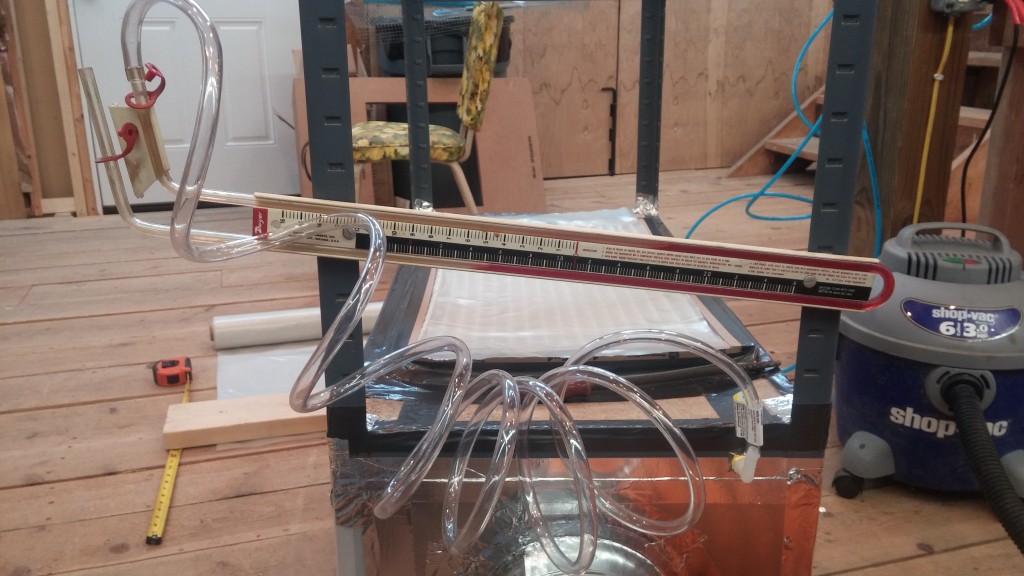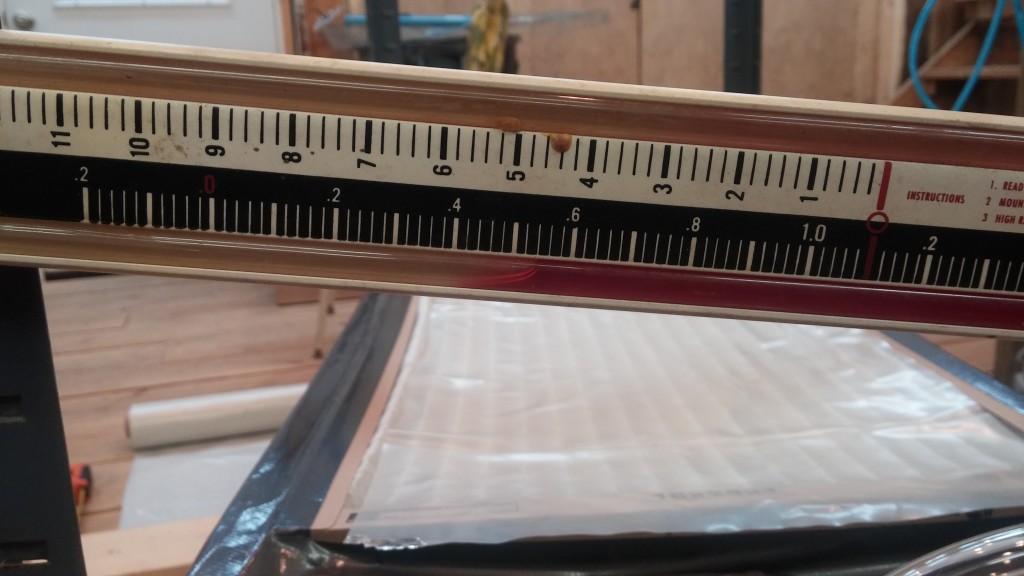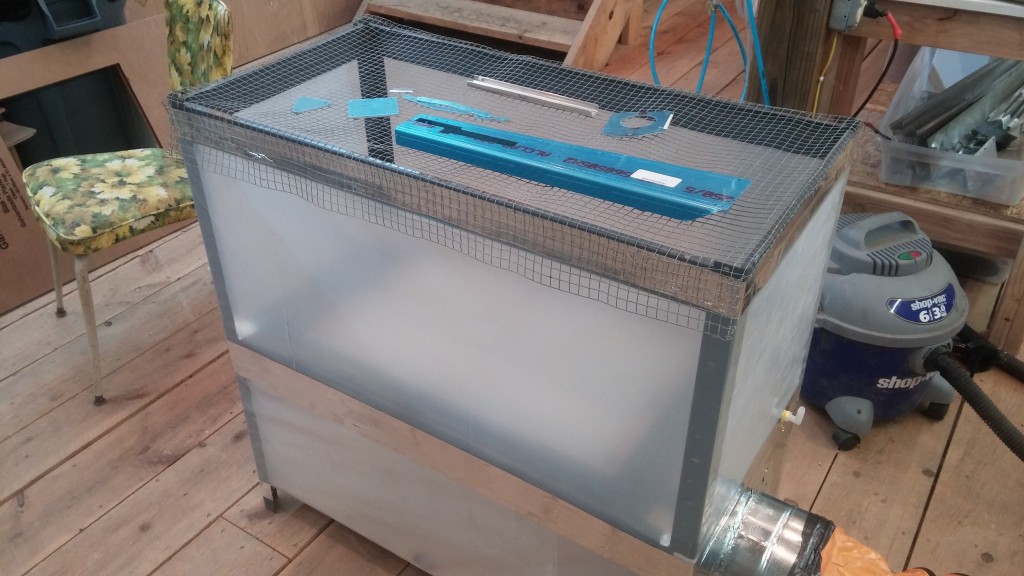Yesterday I received the kit for the Van’s Service Bulletin 16-03-28. I had placed an order as soon as the kit became available. It was delivered in only a few days. Van’s charged $25.00, which they said is their production cost, plus shipping.
The kit is for both the RV-10 and RV-14, came in a padded envelope, and includes the following:
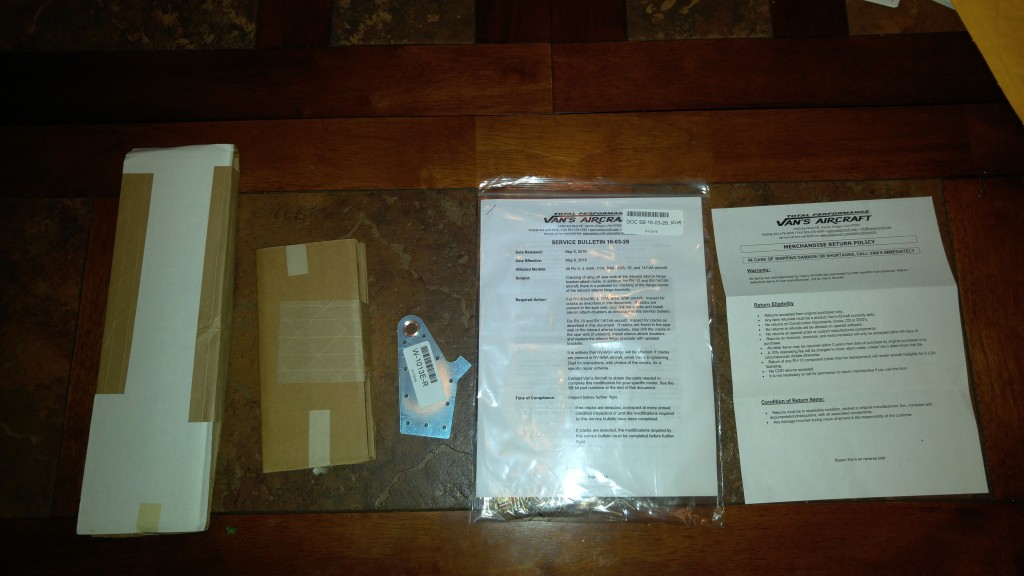
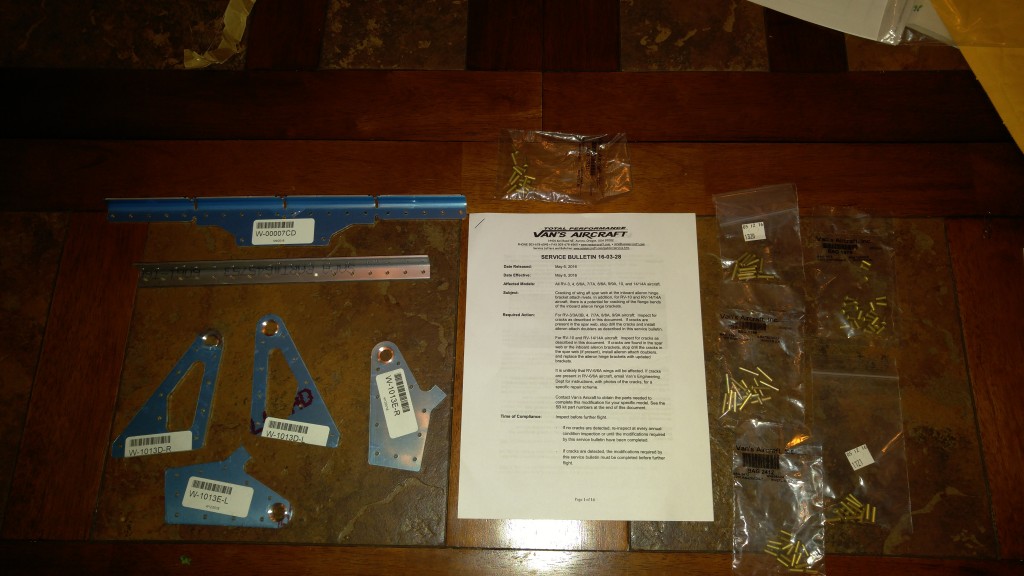
1. Paper copy of the Service Bulletin
2. W-00007CD (to be separated into parts)
3. A piece of pre-drilled angle (part number printed on a label but I forgot what it was) to be cut into parts.
4. W-1013D-R
5. W-1013D-L
6. W-1013E-R
7. W-1013E-L
8. Bag 2751 containing AN470AD4-7 Rivets
9. Bag 1320
10. Bag 1978 containing AN470AD4-5 Rivets
11. Bag 1166 containing AN470AD4-11 Rivets
12. Bag 2412 containing AN426AD4-7 Rivets
13. Bag 1121
There are no specific instructions for installing these parts as an initial construction–the instructions focus on retrofit of completed wings. It should be relatively straightforward, however. The flat parts appear to be thicker and “beefier” replacements for existing aileron bracket parts. In addition, instead of a sandwich of three parts making up the bracket, there are only two parts per bracket, with increased thickness.
There are two bracket pieces that are to be separated into multiple parts and installed on the forward and aft sides of the rear wing spar to provide additional resistance to flexing in the spar web.
